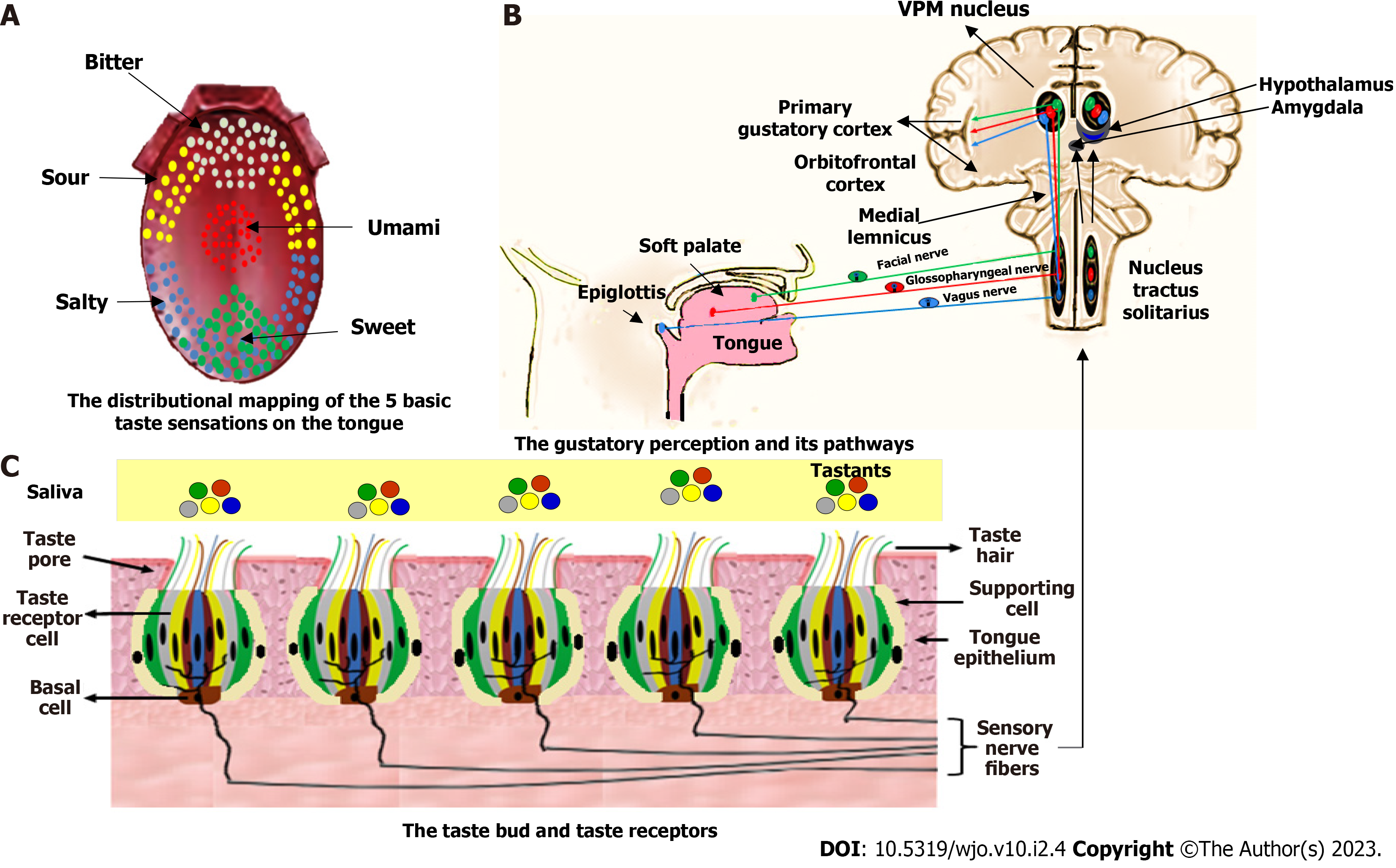Copyright
©The Author(s) 2023.
World J Otorhinolaryngol. May 9, 2023; 10(2): 4-22
Published online May 9, 2023. doi: 10.5319/wjo.v10.i2.4
Published online May 9, 2023. doi: 10.5319/wjo.v10.i2.4
Figure 4 Distributional mapping of the five basic taste sensations on the tongue, the gustatory pathways, and the taste bud and receptors.
A: The five basic taste qualities are sweet, salty, sour, bitter, and umami; B: Tastants are detected by the taste buds on the tongue, soft palate, and epiglottis. Activation of taste receptors is transmitted to the sensory neurons in the facial, glossopharyngeal, and vagus cranial nerves from which their axons carry information to the nucleus solitaries in the medulla oblongata, to the ipsilateral ventral posteromedial nucleus of the thalamus, and then to the primary gustatory cortex. The nuclei in the medulla also send projections to the hypothalamus and amygdalae to activate brainstem reflexes. Secondary fibers project from the insula to the posterolateral portion of the orbitofrontal cortex; C: The taste bud has taste sensory and supporting cells. The taste receptors have long microvilli or hairs which project through the taste pore to connect with substances in the food or drink dissolved into the saliva. VPM: Ventral posteromedial.
- Citation: Hamed SA. Post-COVID-19 persistent olfactory, gustatory, and trigeminal chemosensory disorders: Definitions, mechanisms, and potential treatments. World J Otorhinolaryngol 2023; 10(2): 4-22
- URL: https://www.wjgnet.com/2218-6247/full/v10/i2/4.htm
- DOI: https://dx.doi.org/10.5319/wjo.v10.i2.4









